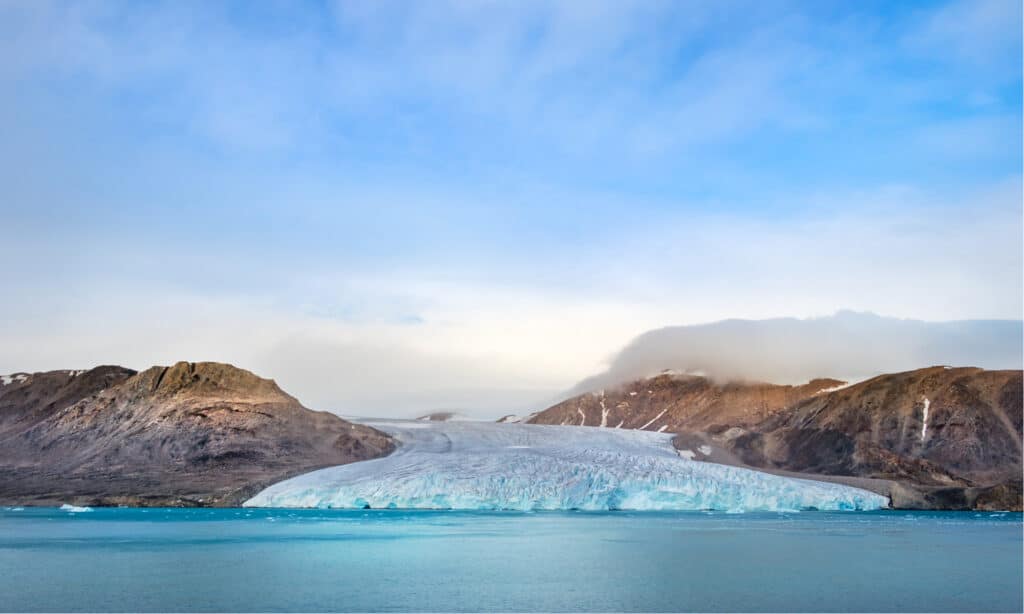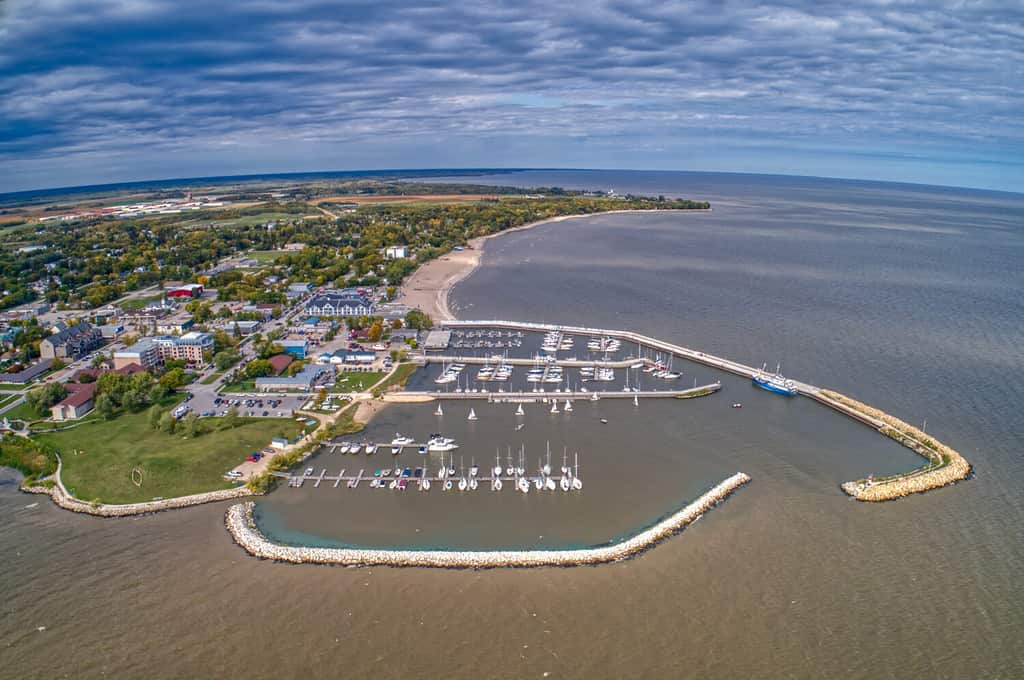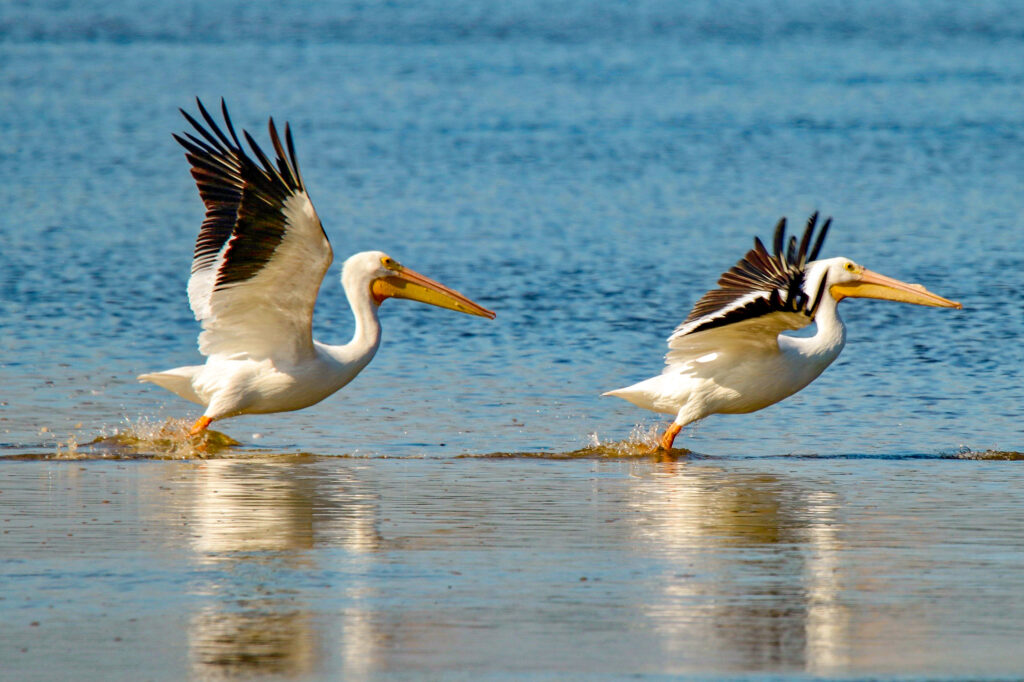Introduction
No country in the world has more lakes than Canada. It has more than 875,000—about 62% of the world’s lakes. Some of these lakes are quite large. Including the Great Lakes, Canada has eight of the 15 largest lakes in the world. One of these is Lake Winnipeg in Manitoba, a remnant of a much larger lake from the end of the last Ice Age. How deep is Lake Winnipeg? Read on to find out!
How Deep Is Lake Winnipeg?

How deep is Lake Winnipeg? It is remarkably shallow, given its incredible surface area.
©lastdjedai/Shutterstock.com
Lake Winnipeg is a massive lake—one of the world’s largest—but it is not as deep as one might think. At its deepest point, Lake Winnipeg is 118 feet (36 meters) deep with an average depth of 39 feet, or about 12 meters. Lake Winnipeg’s reputation as a large lake comes from its vast surface area—9,465 square miles (24,514 km). It is 264 miles long (426 km) and has a shoreline measuring 1,155 miles (1,859 km). This vast lake makes up a huge swath of southern Manitoba.
How Was Lake Winnipeg Formed?

Glaciation, similar to this, was responsible for forming Lake Winnipeg at the end of the last Ice Age.
©RUBEN M RAMOS/Shutterstock.com
Lake Winnipeg arose from the remains of Lake Agassiz. This lake was created by meltwater from the Laurentide Ice Sheet, a retreating glacier, about 12,000 years ago. Lake Agassiz expanded and contracted many times since its beginning after the glacier’s retreat, finally draining and leaving behind several large lakes, including Lake Winnipeg, about 7,500 years ago. Glaciation is responsible for the creation of many of Canada’s lakes.
Things To Do Around Lake Winnipeg

The tow of Gimli, on Lake Winnipeg’s western shore, provides an assortment of recreational activities for visitors to the lake’s extensive shores.
©Jacob Boomsma/Shutterstock.com
Visitors to Lake Winnipeg can spend time boating, swimming, and fishing on the lake. Many recreational beaches are on the southern shore, and others are scattered along the remaining shoreline. There are also many opportunities for camping, hiking, and nature watching throughout the region. Towns and cities around the lake include the city of Winnipeg and the town of Gimli, which offer many recreational opportunities. Provincial parks are nearby—Hecla-Grindstone Provincial Park, Fisher Bay Provincial Park both parks are located on Lake Winnipeg islands), and Grand Beach Provincial Park. These offer additional nature-related options and opportunities to get away from it all.
Where Lake Winnipeg Is on a Map
Wildlife Around Lake Winnipeg
Manitoba Province has an incredible selection of wildlife. Moose, black bears, woodland caribou, and river otters roam and play on the lake’s shores. White-tailed deer, foxes, and coyotes are also prevalent along the wooded shores of Lake Winnipeg.
Red-sided garter snakes thrive amongst the rocks surrounding the lake’s extensive shoreline. They like to nest in holes and crevices in the thousands. Stumbling across one of these nests could shock the ophidiophobist—one who fears snakes.
Lake Winnipeg and the waters that surround it are ideal for waterfowl. Bird watchers can find numerous American white pelicans, Canada geese, mallards, and others. Bald eagles, golden eagles, and turkey vultures soar above the lake’s cool waters. Seabirds, like the common tern, are at home here, too.

American white pelicans are just some of the birds you will find on Lake Winnipeg’s surface and along its shores.
©Susan Rydberg/Shutterstock.com
Amphibians thrive on the insects and larvae found along the lake. Night brings a veritable chorus of American and Canadian toads, spring peepers, green frogs, and boreal chorus frogs. Blue-spotted salamanders, eastern tiger salamanders, and common mudpuppies live throughout the area.
With fishing being such a popular activity on the lake, there is a wide diversity of fish for the enterprising angler. Whitefish, northern pike, sturgeon, perch, and walleye have been caught in large numbers. Smallmouth bass and white bass have made their way into the waters. Fisheries have also introduced rainbow and brown trout for the benefit of anglers; these populations are not self-sustaining.
How Does Lake Winnipeg Compare to Other Large Canadian Lakes?
Lake Winnipeg, though deep, is not as deep as some of Canada’s largest lakes. Here is a comparison with some of the largest. Lake Manitoba, which is adjacent to Lake Winnipeg, is the only one included that is shallower.
| Lake | Surface Area | Greatest Depth |
|---|---|---|
| Lake Winnipeg | 9,465 sq mi (24,514 sq km) | 118 ft (36 m) |
| Great Slave Lake | 10,500 sq mi (27,200 sq km) | 2,014 ft (614 m) |
| Great Bear Lake | 12,028 sq mi (31,153 sq km) | 1,463 ft (446 m) |
| Lake Manitoba | 1,785 sq mi (4,624 square km) | 23 ft (7 m) |
| Lake of the Woods | 1,679.5 sq mi (4,350 sq km) | 210 ft (64 m) |
The photo featured at the top of this post is © wlkellar/Shutterstock.com
Thank you for reading! Have some feedback for us? Contact the AZ Animals editorial team.






